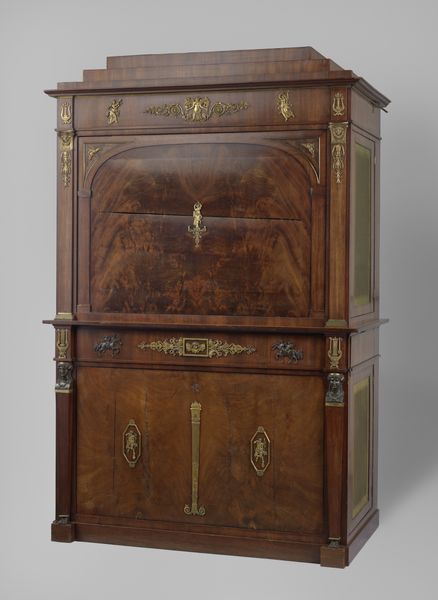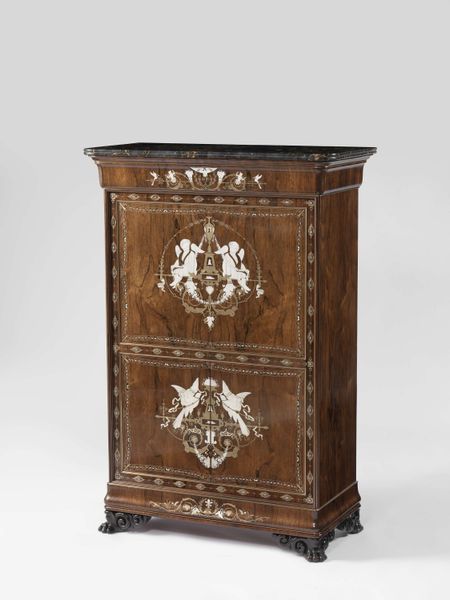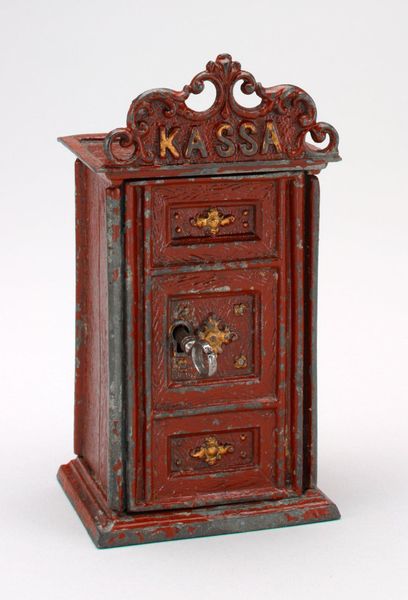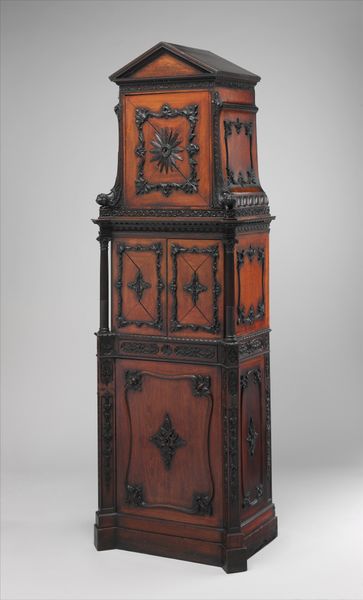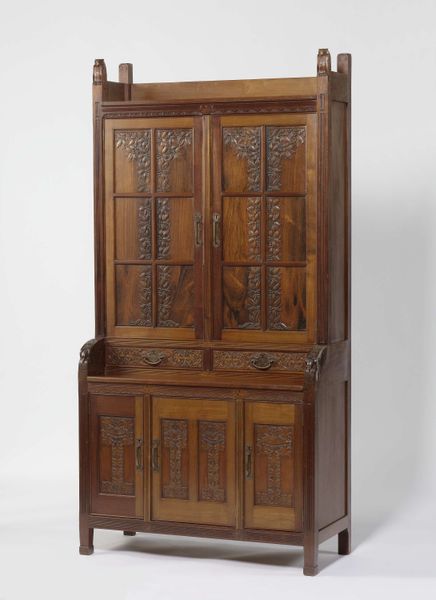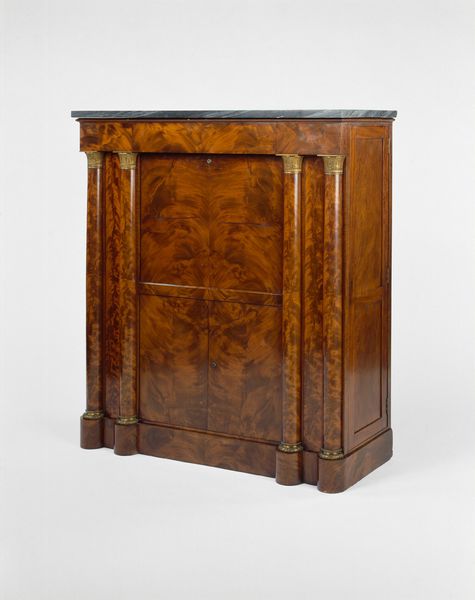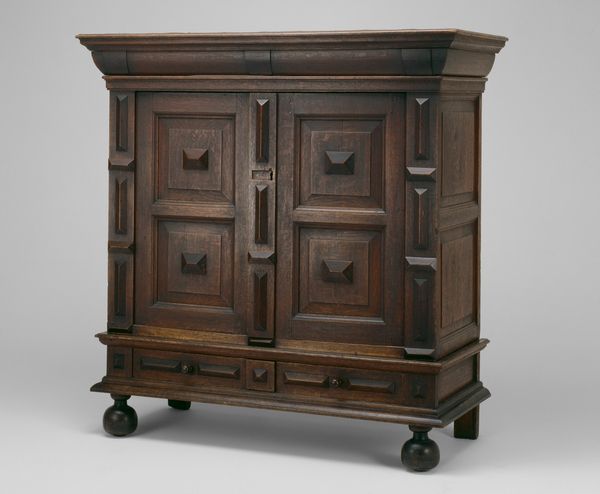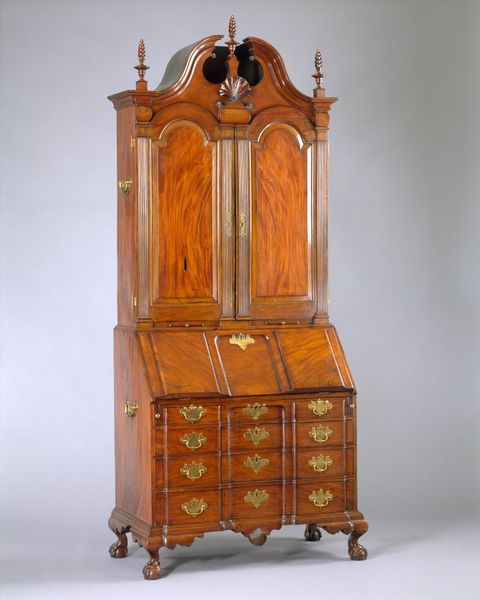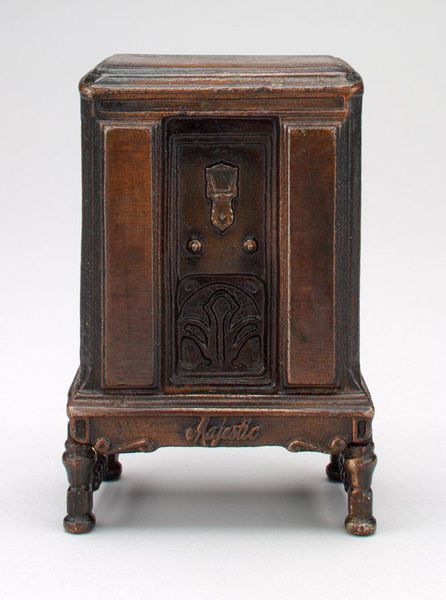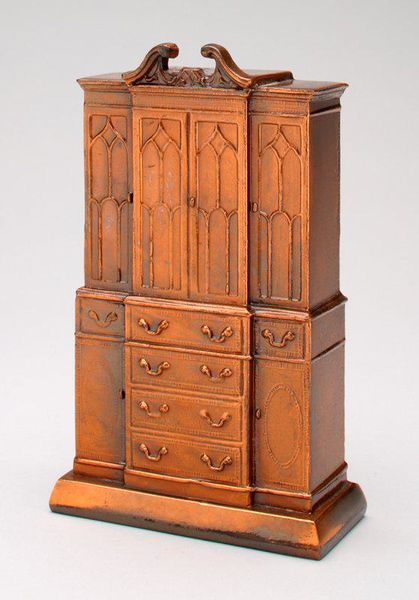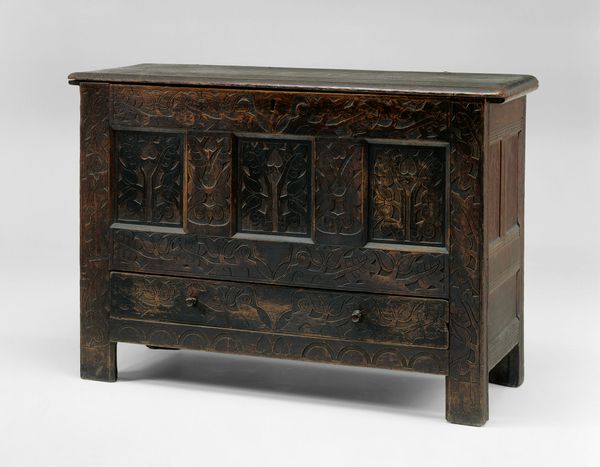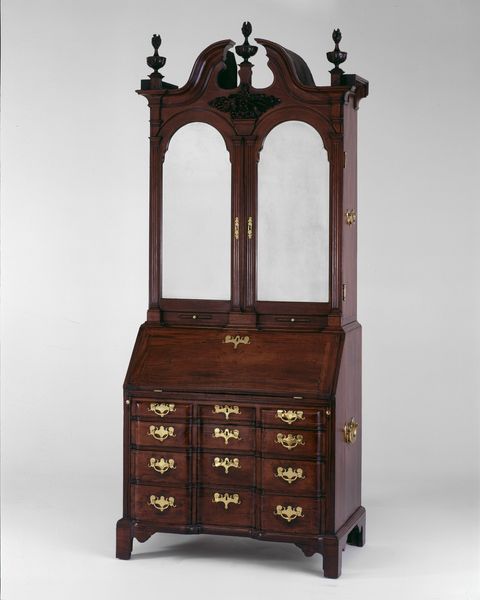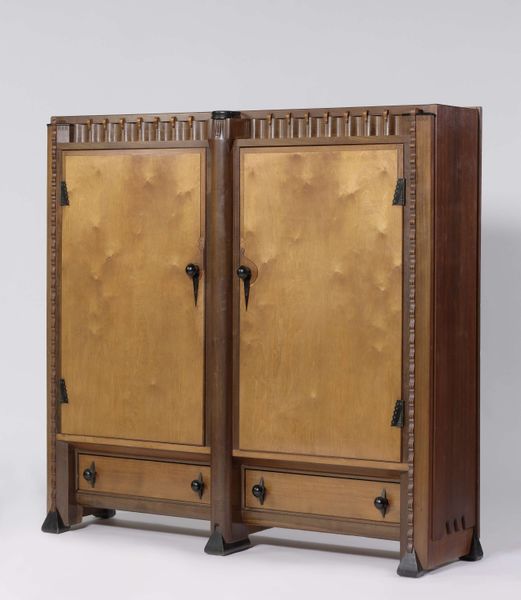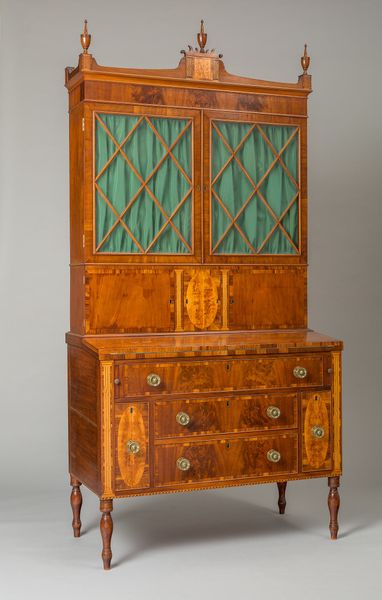
carving, wood
#
neoclacissism
#
carving
#
sculpture
#
furniture
#
wood
Dimensions: 62 x 39 1/4 x 18 7/8 in. (157.5 x 99.7 x 47.9 cm)
Copyright: Public Domain
Curator: The "Secrétaire à abattant," crafted sometime between 1835 and 1847 by Duncan Phyfe. Its polished wood surface exudes a certain seriousness. I'm struck by its architectural qualities and its material presence. What stands out to you? Editor: I'm fascinated by how something so functional can also be considered art. What do you see in this piece beyond its utility? Curator: The piece speaks volumes about the division of labor during this era and Phyfe’s integration of artisanal skill into commodity production. Look at the mahogany veneer: its source, transportation, and the craftsmanship involved in shaping it are all tied to global trade and consumption patterns of the time. This wasn’t just about making furniture, but about material status. What processes catch your attention? Editor: The carving and joinery seem particularly skilled, considering the tools they would have had at the time. Were these pieces like this typically produced in a workshop setting? Curator: Absolutely. The level of detail points to a collaborative effort, perhaps a master craftsman overseeing various journeymen and apprentices. It wasn't simply the artist's vision, but a confluence of skills and labor contributing to its construction. Considering that Neoclassical works emphasized reason and symmetry, is there a link to this piece's physical construction? Editor: It seems like the clean lines and symmetrical panels could be reflected in the efficiency of its production and the clear delineation of labor. Curator: Precisely. Each component meticulously crafted to achieve a unified aesthetic, revealing the underlying economic and social forces that propelled its creation. Understanding the social and historical context helps us rethink not only this era, but our own consumption too. Editor: It’s fascinating to consider furniture not just as functional object, but as evidence of a complex material and economic system. Thank you for shedding light on it! Curator: My pleasure. Material realities offer a deeper understanding of our collective experience, turning what seems static into a dynamic window into history.
Comments
No comments
Be the first to comment and join the conversation on the ultimate creative platform.
